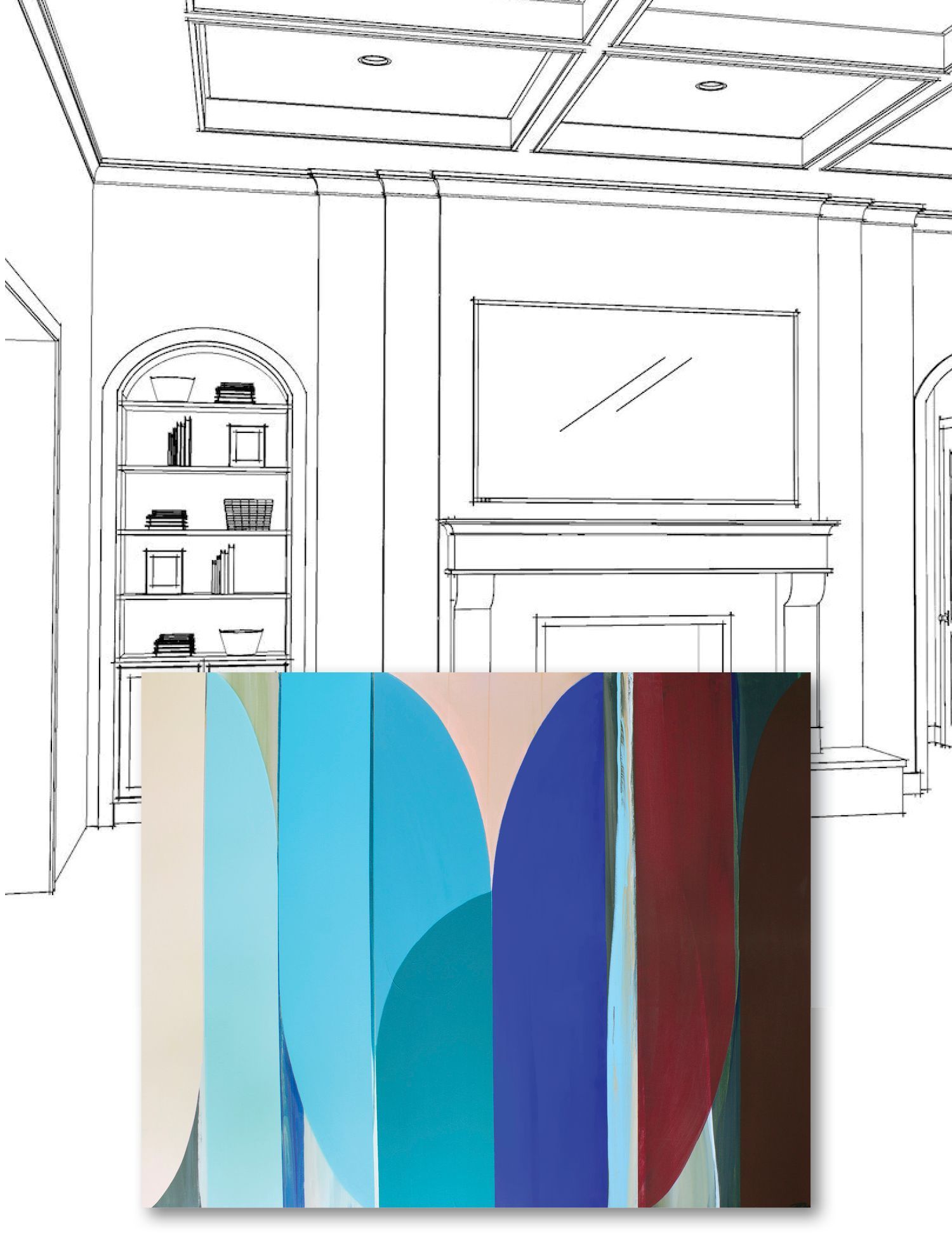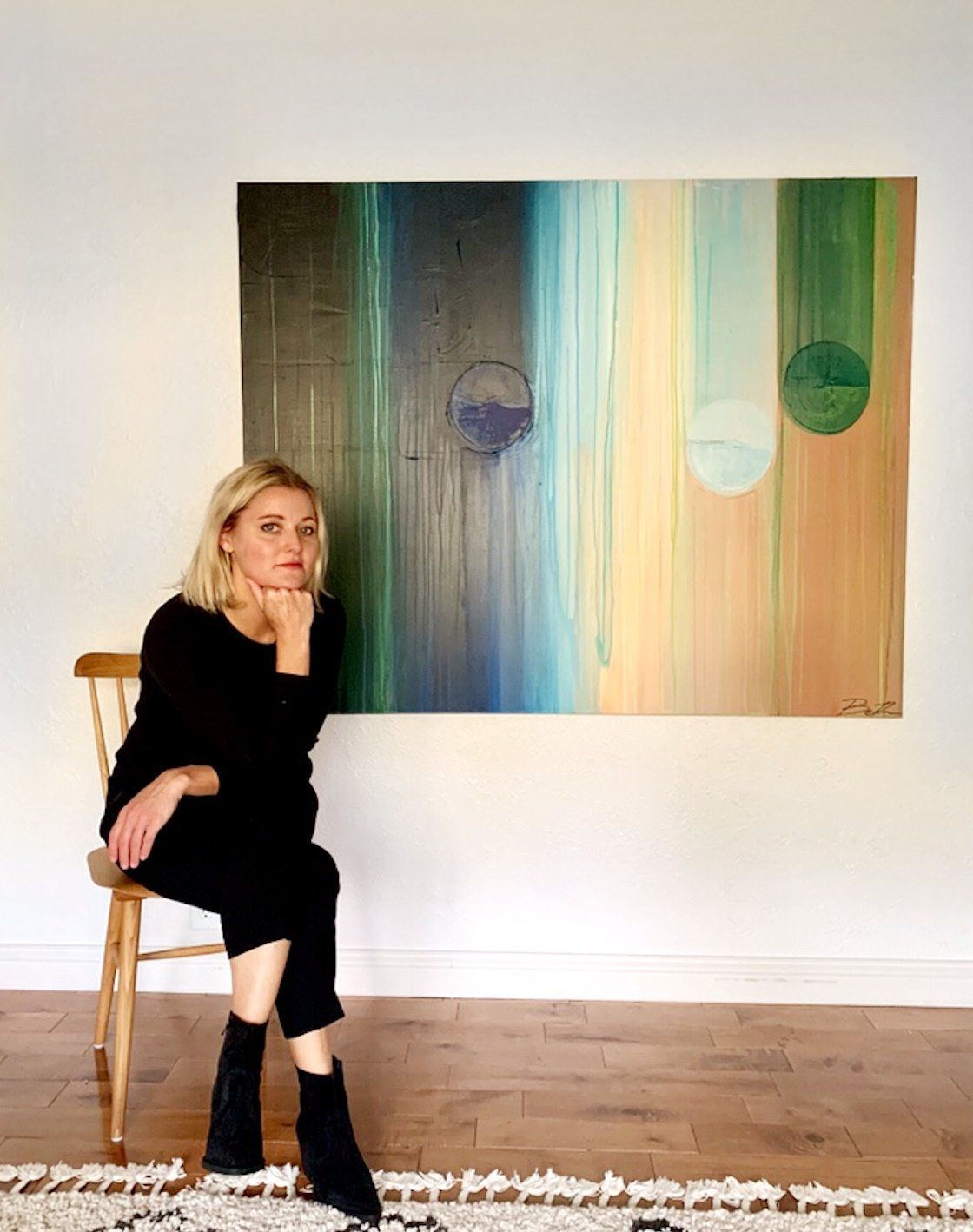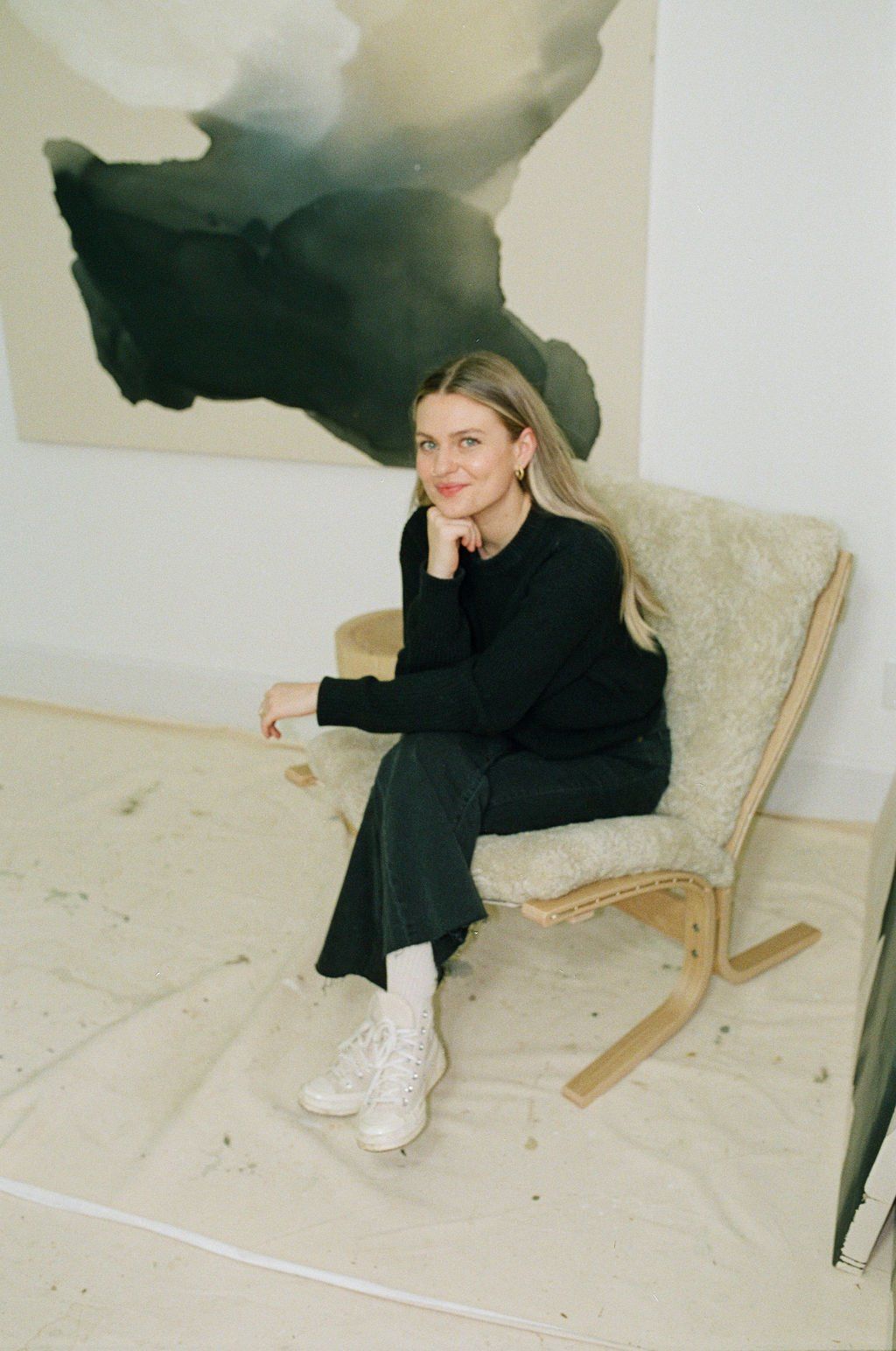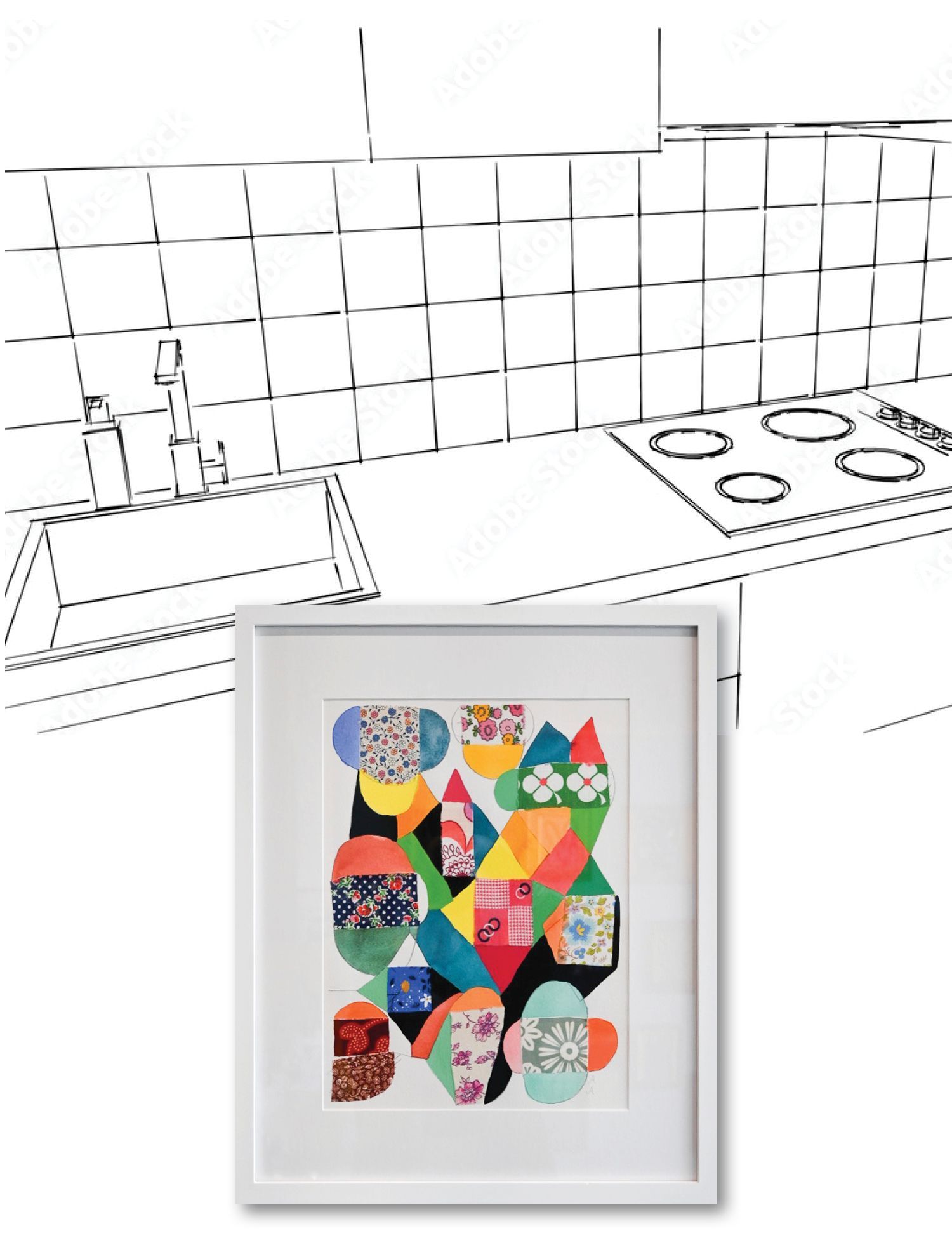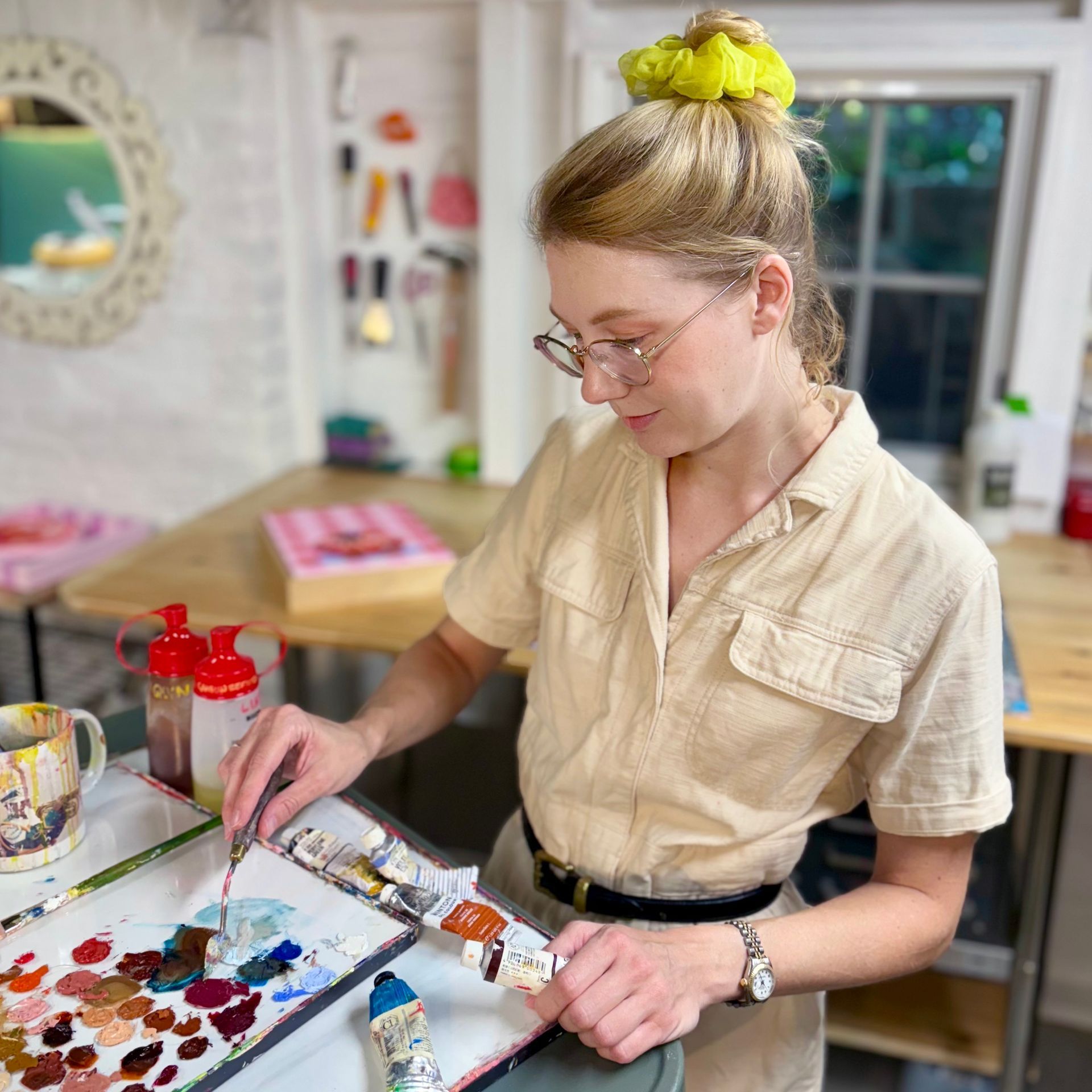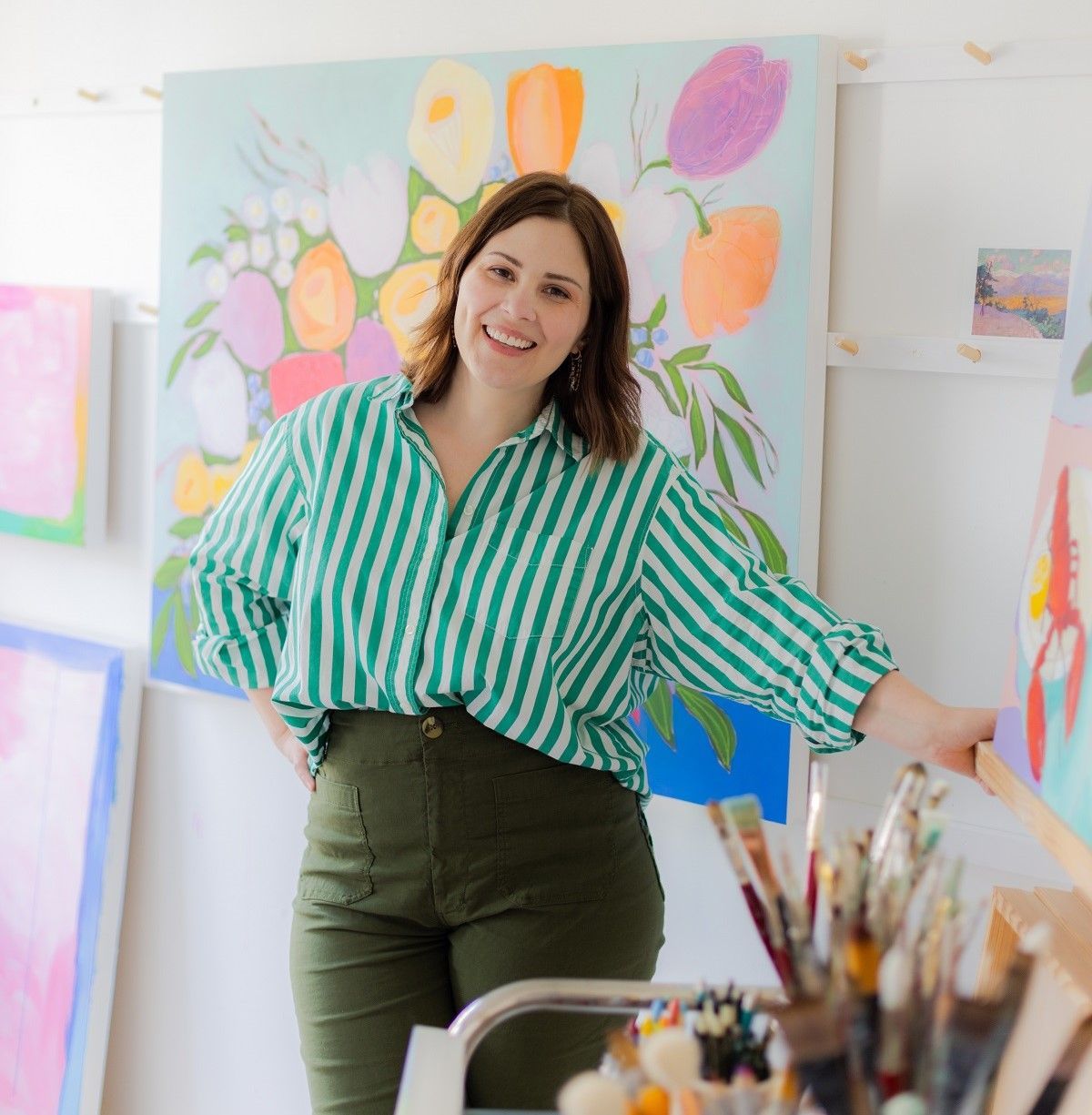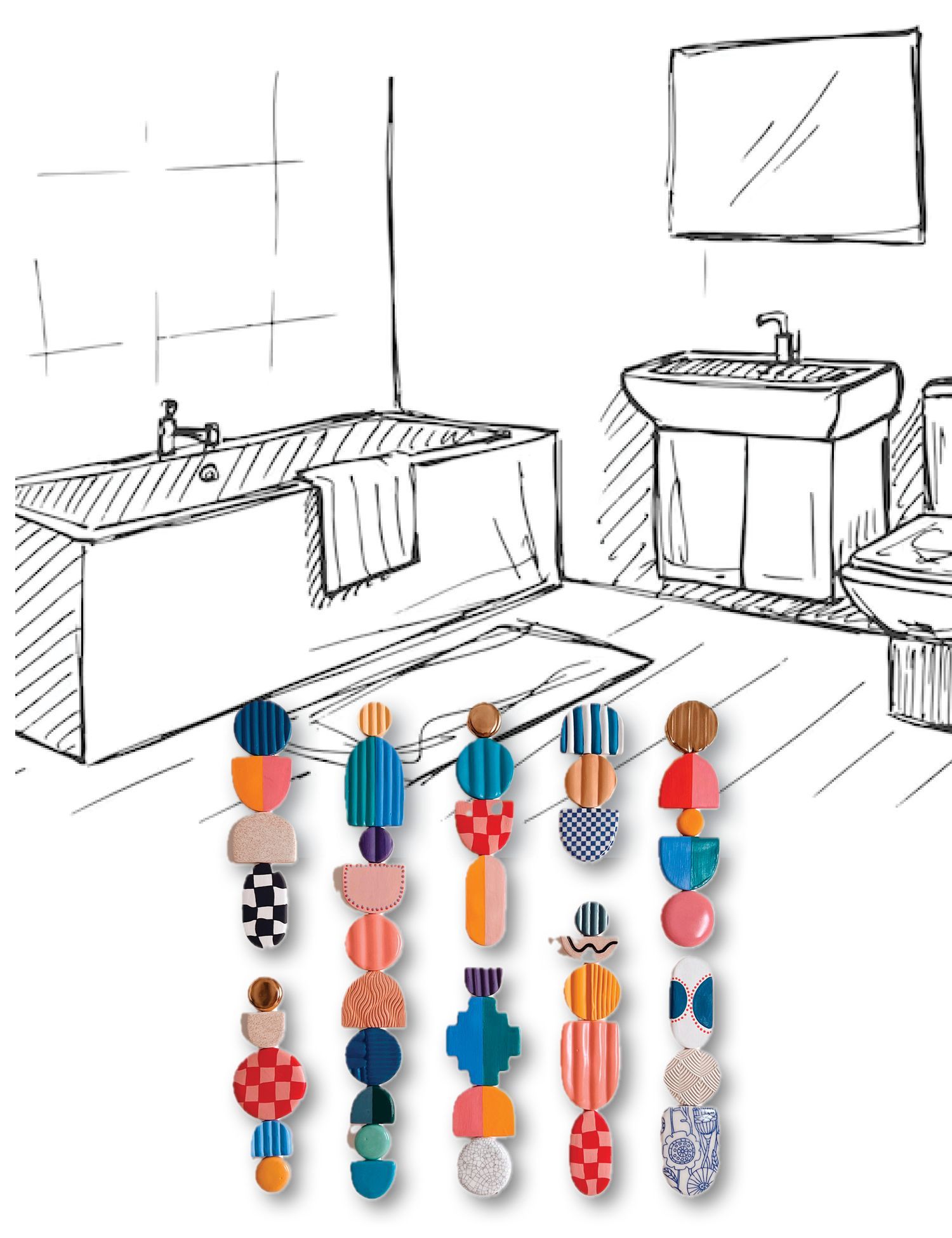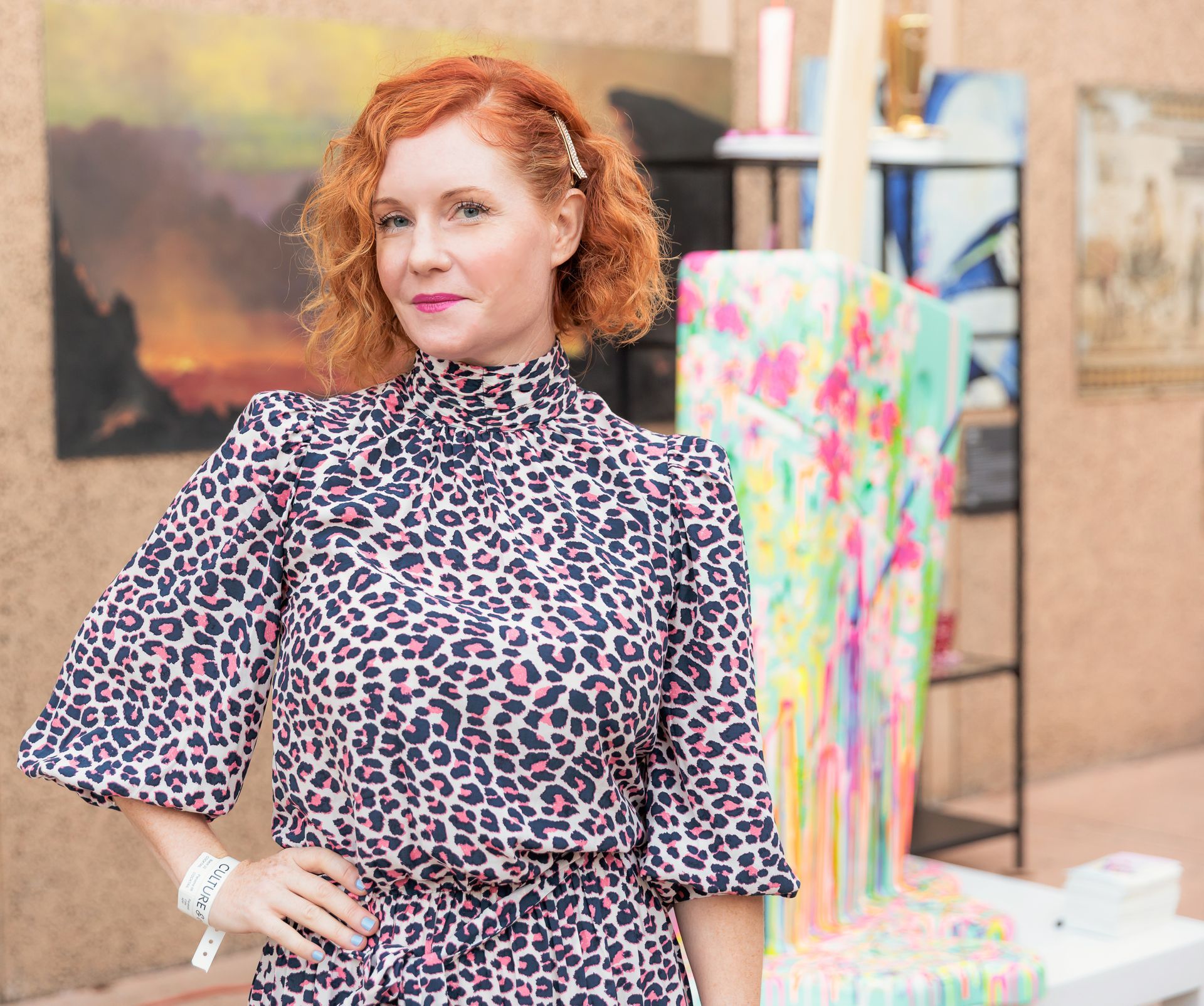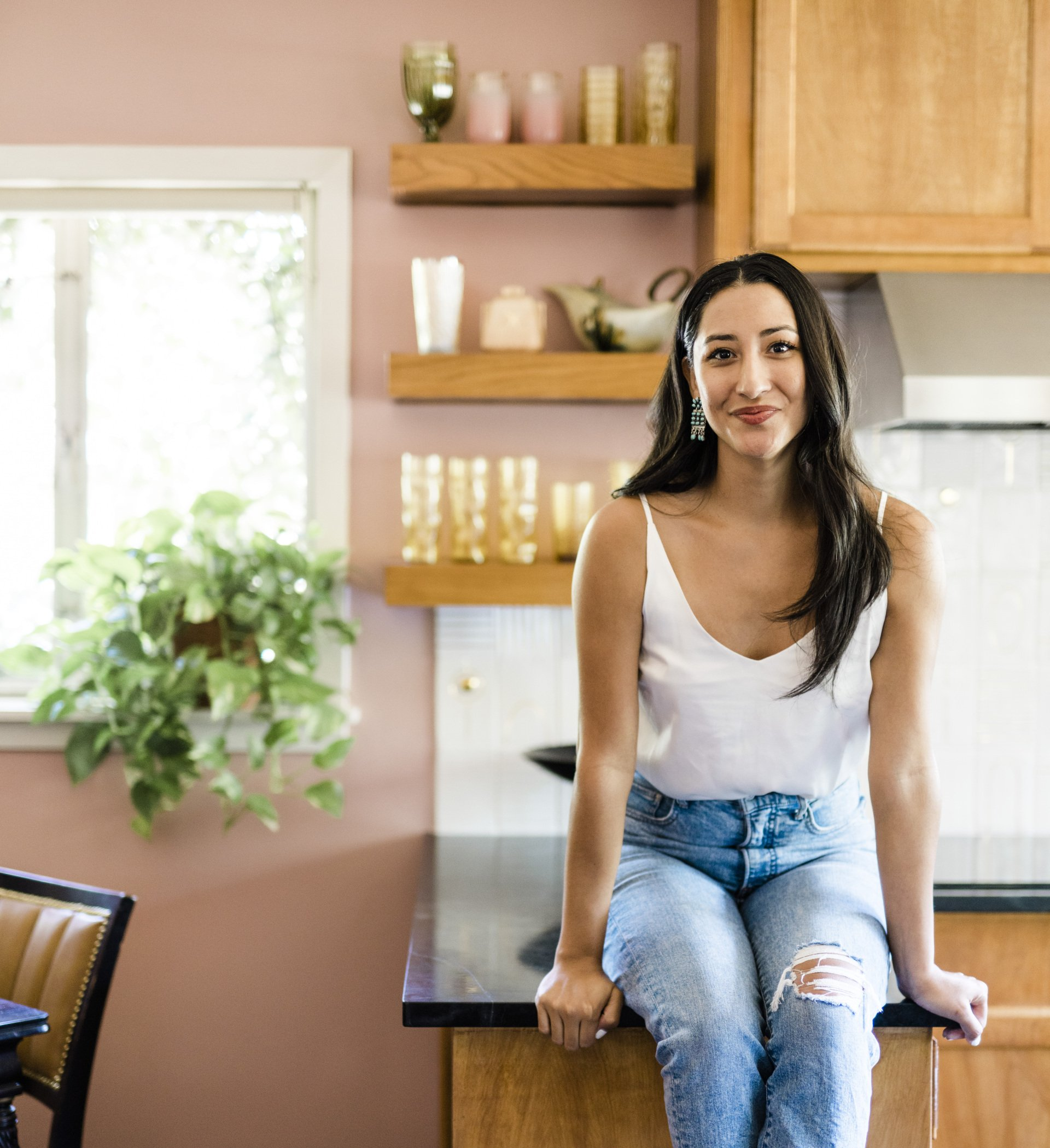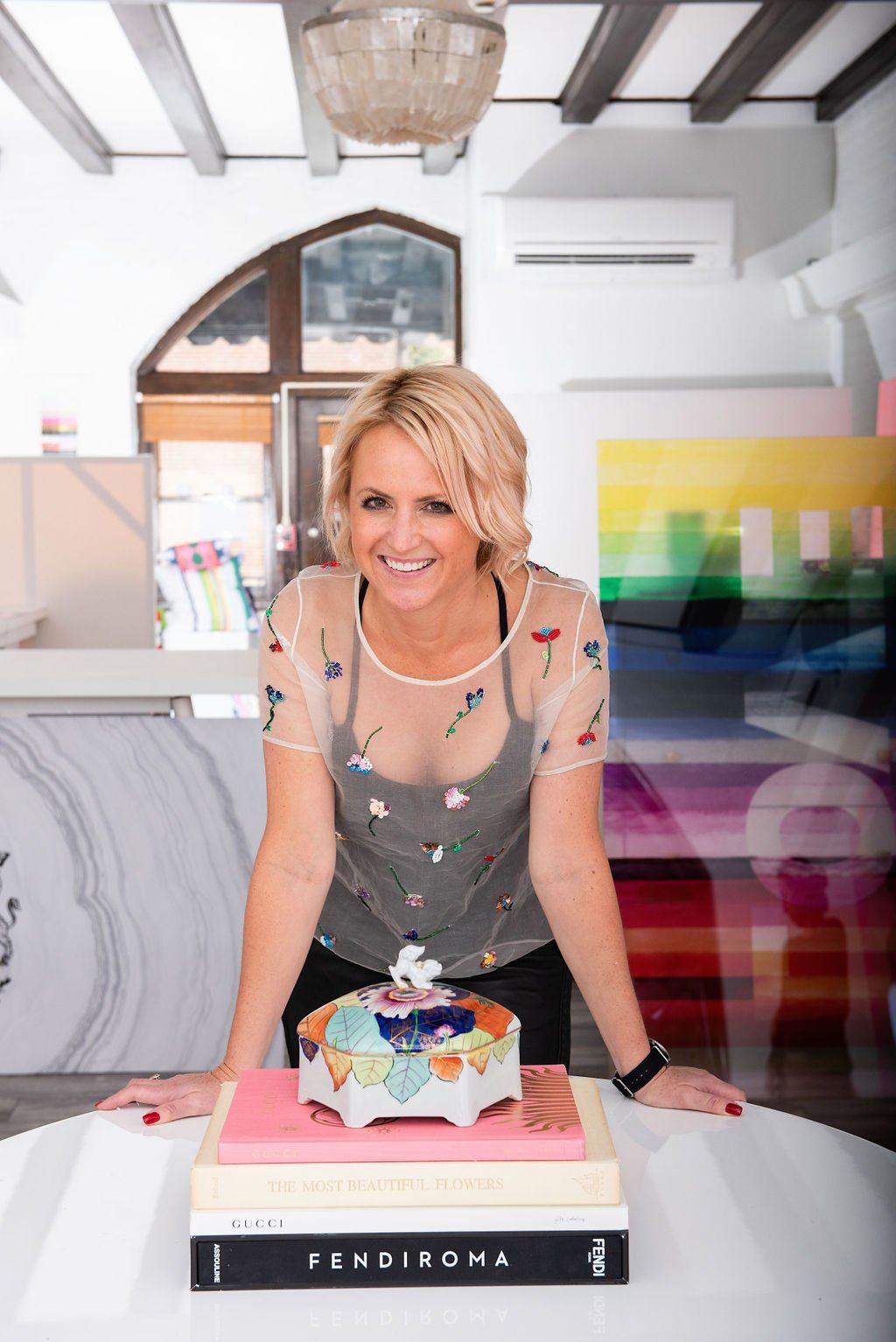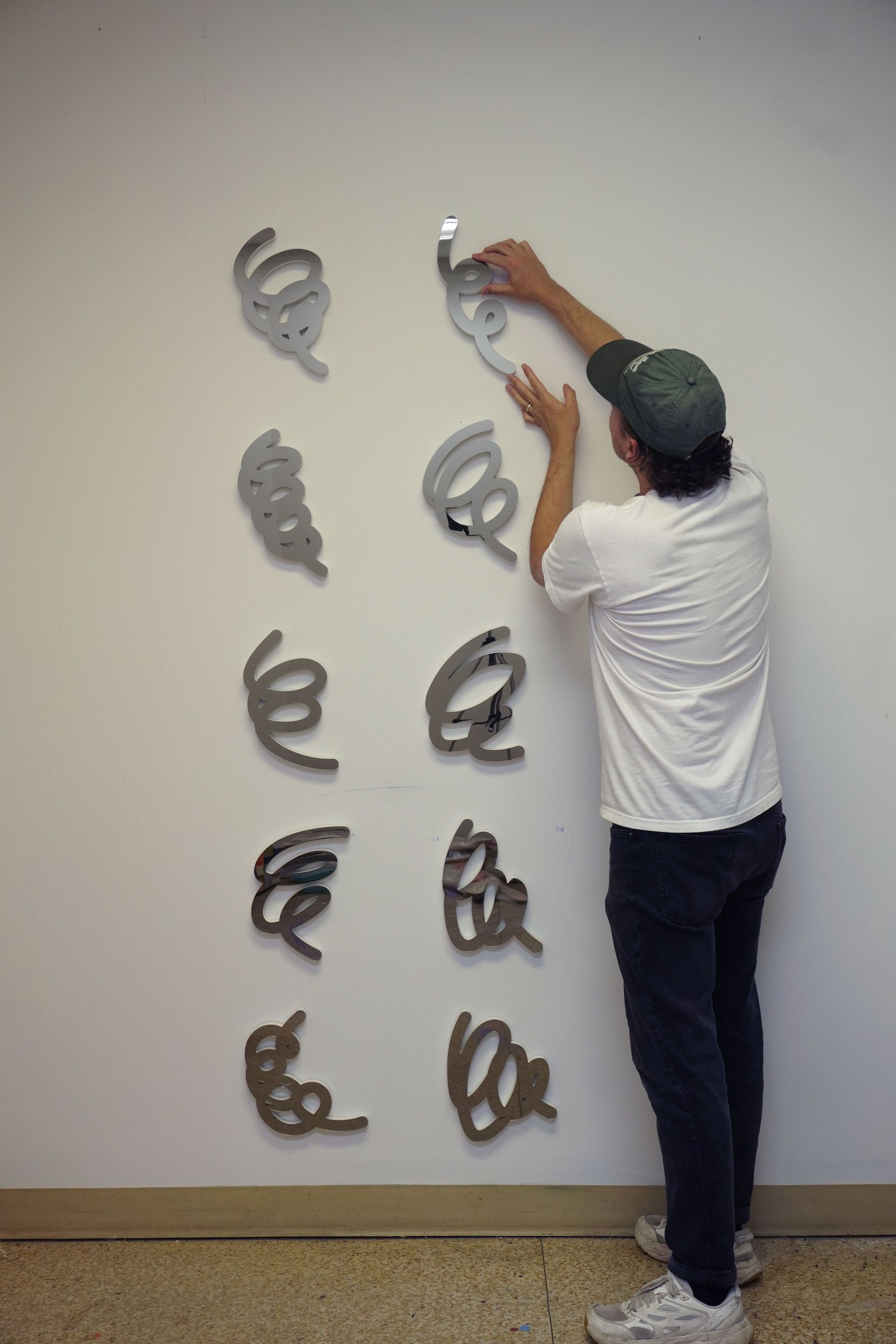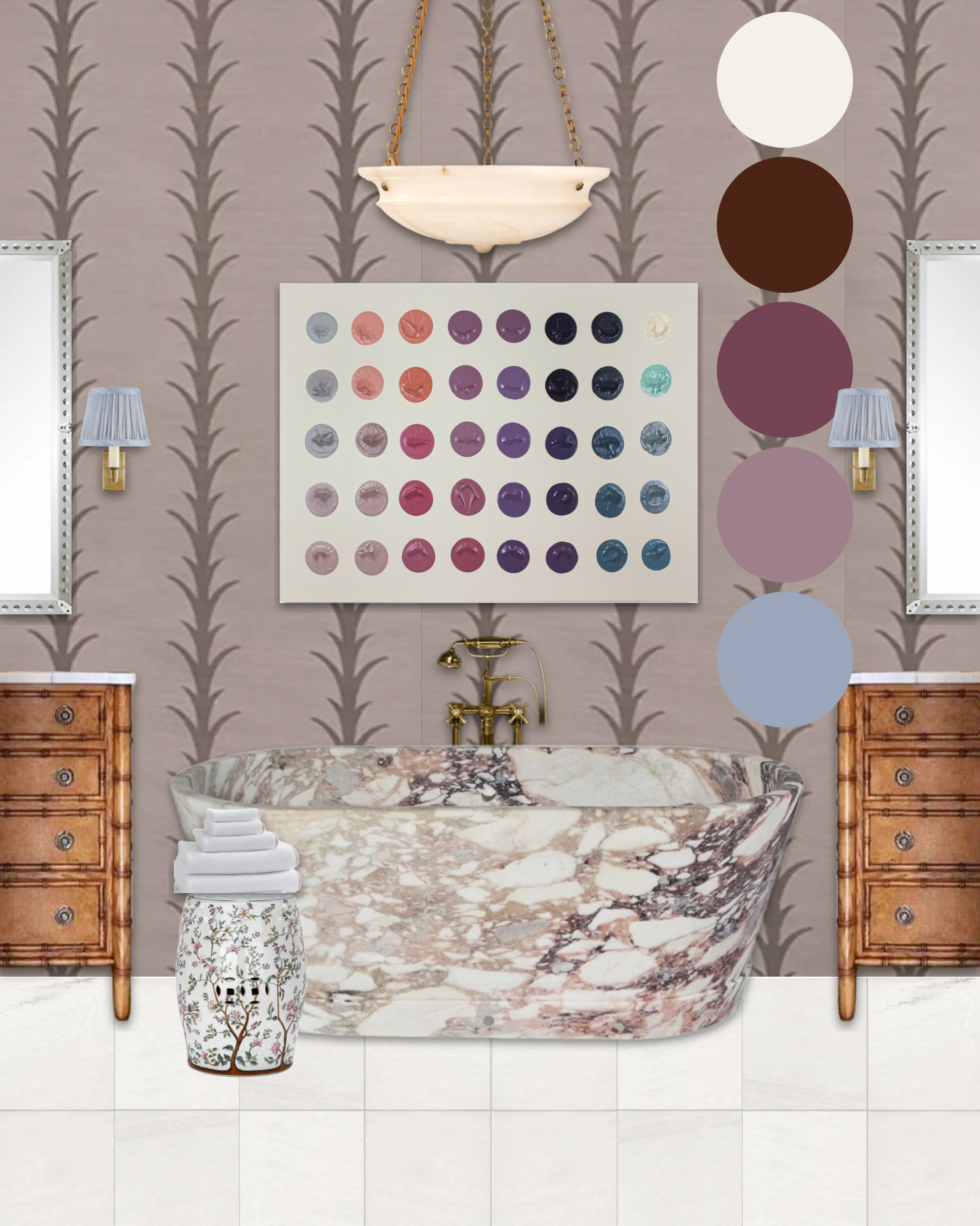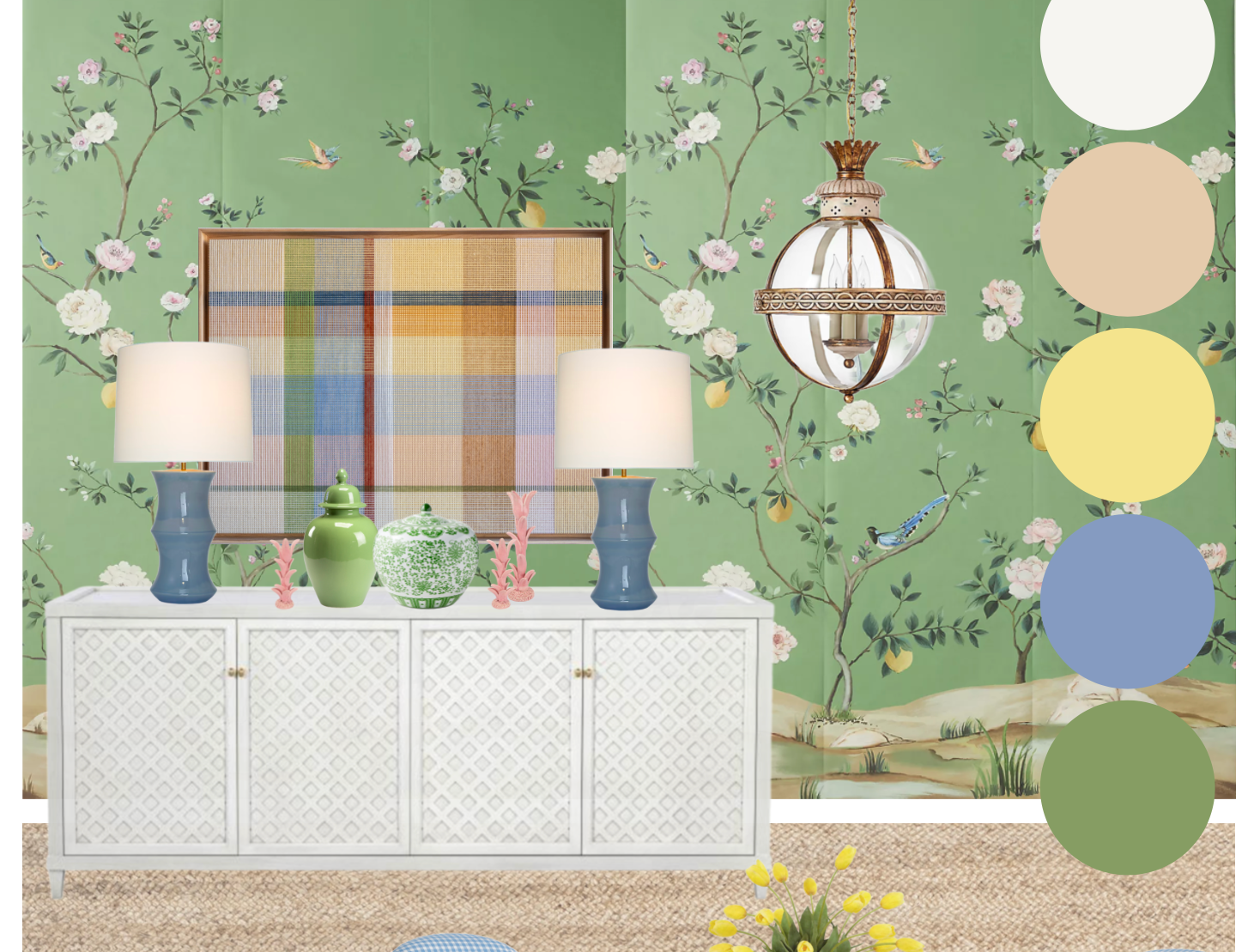Turning Awkward Spaces into Styled Moments
For those tricky little spots that need a touch of something… we've got you covered. Dive into Liz Lidgett’s tips, tricks, and recommendations for styling those corners in your home that could use a little extra art.
Above the Fireplace:
When it comes to hanging artwork above a fireplace—height, heat, and viewing distance all shape how the piece is experienced in the space. This classic design choice comes with unique challenges—each factor influences both how the art is perceived and how well it’s preserved.
Since artwork above a fireplace is often positioned higher than eye level, it’s important to select pieces that read well from a distance. Size matters here, and I recommend using the “two-thirds method.” For squared artwork, fill about two-thirds of the wall or mantel width, leaving room for decor and allowing the space to breathe. For example, if your mantel is 60 inches wide, aim for a piece around 40 inches wide. This creates a balanced and harmonious look. Proper spacing is key too—I suggest leaving a 4 to 10-inch gap between the bottom of the artwork and the top of the mantel. This prevents the piece from appearing to float and helps it integrate seamlessly with the room.
Bold colors and clear, defined shapes are ideal because they grab attention without demanding close inspection. Tiny, intricate details often frustrate viewers—especially when the fireplace below makes it awkward to get closer. High-contrast compositions and strong shapes let the artwork shine while complementing surrounding décor, ensuring it remains impactful from a distance.
Heat and temperature fluctuations can take a toll on artwork over time, causing warping, fading, or cracking—especially for delicate materials like paper or canvas. To keep your pieces in great shape, choose high-quality frames and materials designed to handle environmental changes. Metal or sealed wood frames can help minimize heat damage and light exposure. Remember me telling you to leave space between the top of the mantel and the bottom of an art piece? Keeping space between the fireplace/mantel and the artwork reduces direct heat exposure. This extra care helps preserve your artwork’s beauty while keeping your fireplace wall looking fresh year-round.
My Tips for Styling Above the Fireplace:
Tip #1: Use Vertical Balance – Tall objects on the mantel, like sculptural vases, candlesticks, or plants, can visually connect the artwork to the space, creating a cohesive vertical composition.
Tip #2: Mix Art and Objects – Pair your artwork with curated décor pieces, such as books, textured ceramics, or a small sculpture. This adds dimension and makes the mantel feel intentional rather than leaving a large empty wall above.
Pairing bold, visually contrasting artwork with thoughtful styling can turn your blank space above your fireplace into a focal point that lifts the whole room. I recommend exploring pieces by
Bethany Mabee,
Meghan Bustard, or
Joy Kinna—their abstract works are visually striking, easy to read from a distance, and naturally draw the eye. With larger forms and shapes, these pieces are especially perfect for styling above a mantel or fireplace.
In the Kitchen:
The kitchen is often the heart of the home—a space where functionality meets warmth. While it’s easy to focus on appliances, countertops, and storage, adding art can completely transform this area, making it more visually appealing and cohesive. When it comes to choosing artwork for the kitchen, durability should be your top priority. Framed pieces are ideal—they’re easy to wipe clean and can handle the occasional splash of water, cooking oils, or cleaning chemicals. Materials like glass or acrylic frames add an extra layer of protection against moisture and grease, while works with protective coatings or water-resistant materials can help your art last even longer. Durable pieces also give you the freedom to display art in more dynamic spots—like above the sink or near cooking areas—without constantly worrying about damage. This way, your kitchen can be both functional and visually inspiring.
The area above the sink is a prime location for artwork, but it’s important to position pieces carefully. Keeping art a few inches above the sink protects it from water and steam while still making a statement. Open shelving or grouping pieces thoughtfully can further highlight your art feeling integrated into the kitchen’s design. To keep the look cohesive, consider your kitchen’s existing color palette and theme—art that complements these tones will tie the space together. Vintage portraits, still-life scenes, or even ’sillier' designs can work beautifully, adding character and warmth without overwhelming the room. I would recommend artists like
Emily Furr,
Alexandra Ackerman,
Trevor Mikula, or
Jennifer Allevato for artwork to hang in your kitchen.
My Tips for Styling In Your Kitchen:
Tip #1: Think practically, display boldly
-
Choose durable, framed pieces that can withstand splashes and heat, and don’t be afraid to pick bold colors or clear shapes that read well from a distance—especially above the sink or near cooking areas.
Tip #2: Integrate with your kitchen’s style - Consider your color palette, finishes, and overall theme. Pair art with open shelving, task lighting, or grouped décor to make the space feel intentional and cohesive.
Adding art to your kitchen is an easy way to bring personality, warmth, and style into one of the most-used spaces in your home. With a little thought around durability, placement, and coordination with your existing décor, even small touches can make a big impact. Whether you go for framed prints, bold abstract pieces, or charming still-life scenes, the right artwork can turn your kitchen from purely functional into a space that’s both inspiring and inviting. Get creative, have fun, and let your kitchen reflect your personal style. In doing so, I recommend artists like Alex Ackerman, Emily Furr, and Trevor Mikula who are nothing short of adding personality into your space!
For the Bathroom:
Bathrooms are often overlooked when it comes to home decor, yet they offer a unique opportunity to infuse personality and style into your daily routine. However, the bathroom's high humidity and fluctuating temperatures can pose challenges for traditional artwork. The bathroom environment is inherently humid due to showers and baths. This moisture can cause damage to artwork over time, leading to issues such as warping, fading, or mold growth. Therefore, selecting art made from moisture-resistant materials is crucial for longevity and aesthetic appeal.
When choosing artwork for your bathroom, consider the following materials:
- Ceramic: Glazed ceramic tiles or sculptures can add texture and color to your bathroom walls. Their non-porous surface makes them resistant to moisture and easy to clean.
- Metal: Metal art pieces, such as aluminum or stainless steel, are durable and resistant to corrosion. They can introduce a modern or industrial touch to your bathroom decor.
- Acrylic Gouache: ONLY acrylic gouache prints or paintings are moisture-resistant. Acrylic paintings can mimic the look of glass without the fragility, making them suitable for bathroom settings.
- Sealed Canvas or Wood: While traditional canvas or wood can absorb moisture, those that are properly sealed with waterproof coatings can withstand bathroom humidity. Ensure that the sealant is high-quality and applied correctly to prevent damage.
My Tips for Styling in the Bathroom:
Tip #1 - Avoid Direct Water Exposure: Place art away from direct water sources like showers or sinks to minimize the risk of splashes.
Ensure Proper Ventilation: Use exhaust fans or open windows to reduce humidity levels in the bathroom.
Tip #2 - Regular Maintenance: Clean the artwork periodically to remove any moisture buildup or potential mold growth.
Consider Framing Options: Use frames made from moisture-resistant materials and consider glass or acrylic glazing to protect the artwork.
Incorporating art into your bathroom is an excellent way to personalize the space and create a relaxing atmosphere. By selecting materials that can withstand the bathroom's unique conditions, you can enjoy your artwork for years to come. Remember to consider the environment and choose wisely to ensure your art remains a beautiful and lasting feature in your bathroom decor. I recommend purchasing works from Betsy Enzensberger, Eliana Bernard, Kristi Kohut, or Nate Nettleton.


